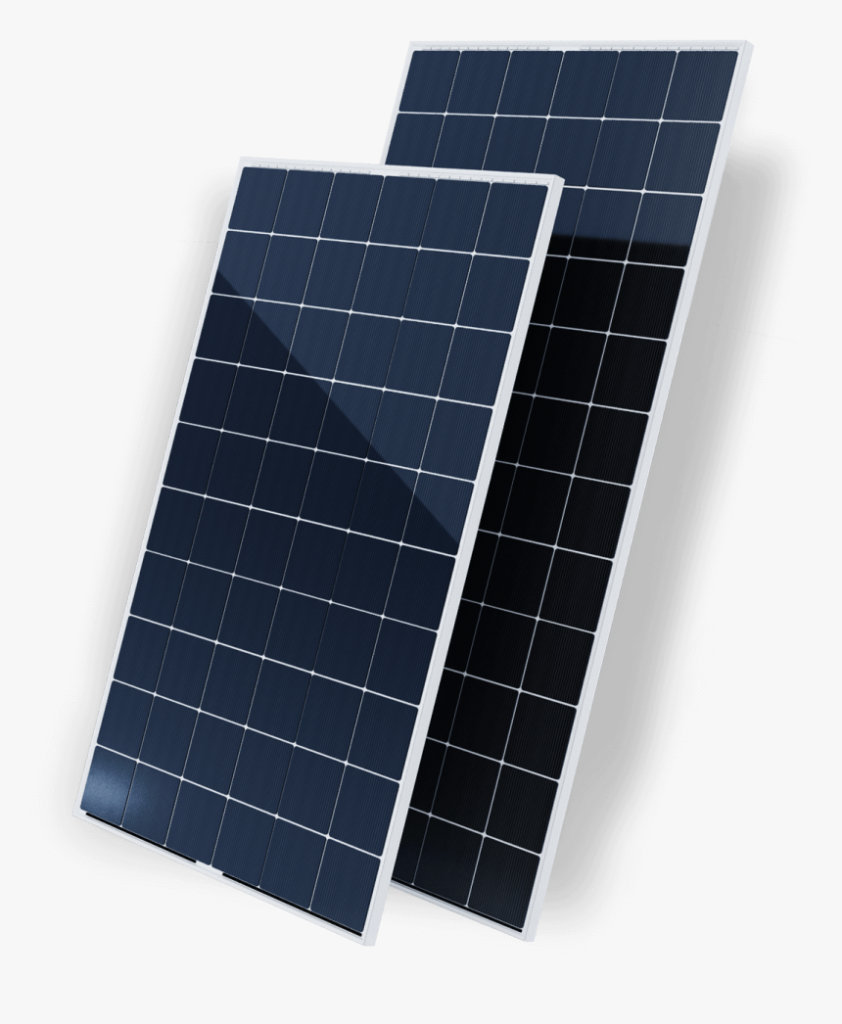Solar Panels
- Home
- /
- Solar Panels

Monocrystalline Silicon Single Glass 420W-550W
Monocrystalline Silicon panels are made from single-crystal silicon ingots, which are sliced into thin wafers. These wafers are then assembled into solar cells, which are combined to form a solar panel. The uniform crystal structure of monocrystalline silicon results in high efficiency and reliability.
Benefits:

High Efficiency
Monocrystalline Silicon panels typically have higher efficiency rates compared to other types of solar panels, such as polycrystalline or thin-film. This means they can generate more electricity per square meter of panel area.

Space Efficiency
Due to their high efficiency, monocrystalline panels require less space to generate the same amount of electricity as other types of panels. This makes them suitable for installations where space is limited.

Longevity
Monocrystalline Silicon panels are known for their durability and longevity. They have a long lifespan, often exceeding 25 years, and many manufacturers offer warranties to guarantee performance over this period.

Performance in Low Light Conditions
Monocrystalline Silicon panels perform well even in low light conditions, making them suitable for locations with partial shading or areas that experience cloudy weather.

Sustainability
Silicon, the primary material used in monocrystalline panels, is abundant in nature and can be recycled. Additionally, solar energy generation produces no greenhouse gas emissions, contributing to a cleaner environment

Monocrystalline Silicon Bifacial Dual Glass 550W-620W
Monocrystalline Silicon Bifacial Dual Glass panels are constructed using monocrystalline silicon cells sandwiched between two glass layers. These panels are designed to capture sunlight from both the front and rear sides, hence the term "bifacial." They utilize the property of the silicon cells to generate electricity not only from direct sunlight but also from reflected sunlight on the rear side of the panel.
Benefits:

Increased Efficiency
Bifacial technology allows these panels to generate electricity from both sides, significantly increasing their overall efficiency compared to traditional single-sided panels. This can result in higher energy yields per installed watt.

Enhanced Durability
The dual-glass construction offers improved durability and resistance to environmental factors such as moisture, humidity, and temperature fluctuations. This can lead to longer panel lifespan and reduced degradation over time.

Improved Performance in Various Conditions
Bifacial panels can generate electricity from both direct sunlight and reflected light, making them suitable for installations in environments with high albedo, such as snowy landscapes, desert regions, or areas with light-colored surfaces.

Flexibility in Installation
Bifacial panels offer flexibility in installation orientation and tilt angle, as they can capture sunlight from both sides. This allows for optimization of energy production based on site-specific conditions, such as terrain and shading.


